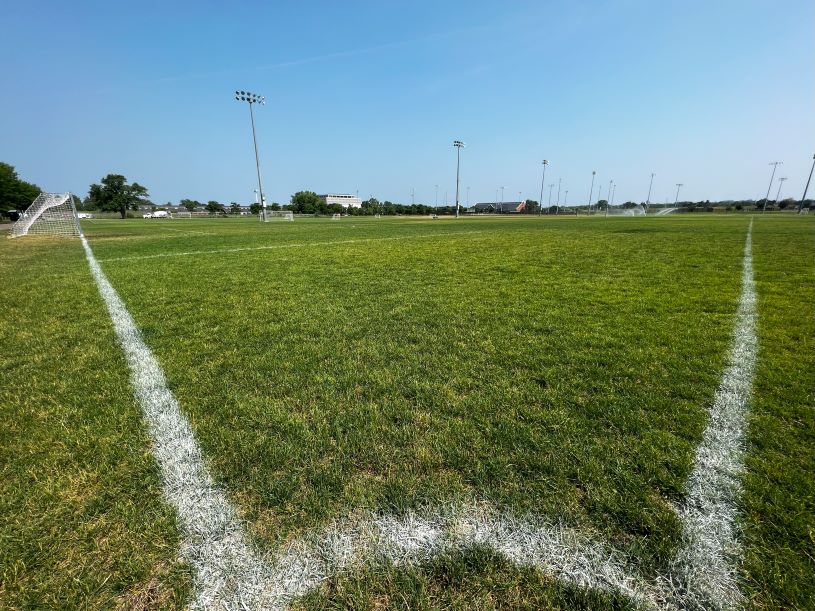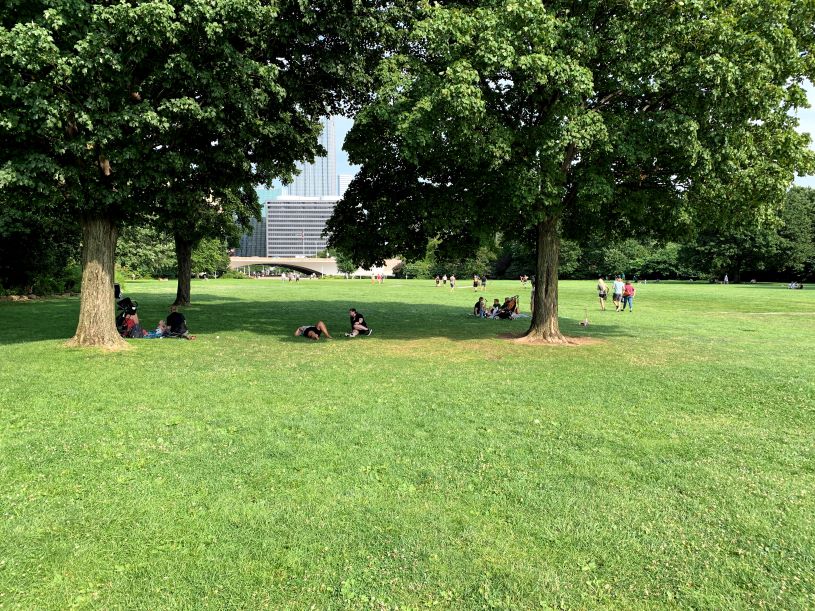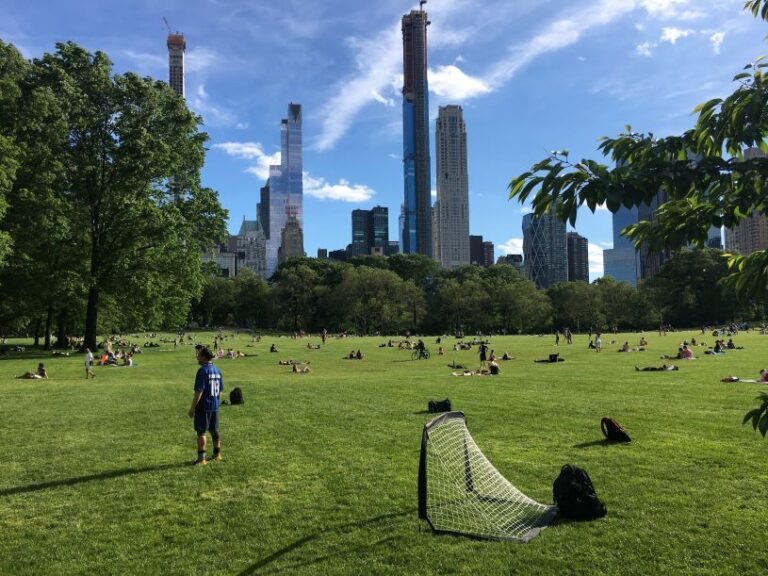By Michael R. Barnes, Ph.D.
A broad narrative exists among those not involved in turfgrass management and research that turfgrass spaces provide few benefits beyond simple aesthetics. Most commonly, such narratives frame this comparison based on the high amounts of inputs needed to maintain turfgrass areas in relation to the perceived limited benefits. These narratives, however, leave out the broad variety of benefits both ecologically and socially of properly managed turfgrass spaces – including sports fields. So how did we get to this place where there is an imbalance between the negative aspects individuals hold and the lack of positive aspects?
Understanding ecosystem services
Two connected factors have played a significant role in this imbalance being created and persisting until today: 1) comparing vastly different landscape types and 2) a lack of research on cultural benefits.
Before we dive into those two factors, it would be helpful to discuss the concept of ecosystem services. Ecosystem services provide a framework for categorizing benefits of nature. Those benefits are organized into three broad categories.
- Cultural ecosystem services refer to outputs from ecosystems that affect the physical and mental states of people (e.g., recreation).
- Provisioning ecosystem services are more tangible material outputs that can be biotic and abiotic (e.g., decorative flowers).
- Regulation and maintenance ecosystem services refer to the abiotic and biotic effects of environments that impact human comfort, health and/or safety (e.g., cooling).
Within each category there are a vast number of subcategories to enhance the specificity of benefits. This helps researchers better capture specific differences between landscapes and ecosystems and then compare the relative benefits between different types of nature. With a little background on ecosystem services, we can discuss the two factors mentioned earlier: inappropriate landscape comparisons, and missing cultural ecosystem services.

Why is turfgrass devalued?
First, turfgrass greenspaces rarely are compared on a like-to-like basis with other surface types. Often, turfgrass is compared with landscapes that share minimal characteristics in common with it such as prairies or forests. Although these landscapes have immense value, they don’t afford the same use and functions as turfgrass. For example, it would be quite difficult to hold a soccer match in a forest without a lot of risk. So, although a forest will provide significantly more CO2 absorption than a turfgrass sports field, its uses and functions are distinctly different.
So, to what should we compare turfgrass areas? These spaces provide a comfortable ground cover, which allows a variety of activities to take place on them. The logical comparisons are then alternative “ground covers” (e.g., artificial turf and hardscape) or lack of ground cover (e.g., dirt). When we compare the ecosystem services, what do we find? Natural turfgrass areas contain far more ecosystem services than the alternatives, which provide – at best – minimal services, or – at worse – disservices, or outputs that negatively impact environmental or human well-being (e.g., increased heat). Therefore, when using like-to-like surface comparisons we can say that turfgrass greenspaces provide:
- Increased CO2 sequestration.
- Increased cooling to combat urban heat effects.
- Increased opportunities for safe and sustainable recreation and relaxation.
It also should be noted that these ecosystem services or benefits can be enhanced further by the adoption of best management practices and lower-input turfgrasses, allowing turfgrass spaces to increase their benefits while maintaining quality.
The second factor is related to an issue from the research and academic side, whereby, until recently, cultural ecosystem services have received little attention. The ecosystem services framework was first widely adopted for use in the natural sciences, which prioritized work on provisioning and regulation and maintenance services of landscapes, which makes sense given their perspectives. However, this meant that the area in which turfgrass is strongest – cultural services – was not talked about nearly as frequently to its ongoing detriment.
An observation from my initial work in the world of turfgrass science was that individuals largely glossed over the surface on which activities were taking place. While researchers would talk about the benefits of parks for example, they would mention that people could play frisbee in the park, but never mention what surface it was on – which was most likely turfgrass. So, what may seem obvious to folks in the industry is sadly overlooked by many.
What kinds of benefits do turfgrass areas have specifically related to cultural ecosystem services compared to similar surfaces?
- A comfortable surface on which to relax and recreate due to texture and temperature.
- Space for socialization to occur in an easily accessible natural environment.
- A place in which both observational and hands-on learning can take place either directly involving the turf itself or serving as a comfortable space to engage with other learning materials.

Communicating the benefits of turfgrass
Sports field managers and staff can be critical in communicating and showcasing the multiple benefits of the spaces they manage. Benefits can be communicated both directly and indirectly to players, coaches, spectators and community members through a variety of means:
- Managers can utilize digital platforms such as social media and the facility’s website to share key maintenance or renovations happening at their facility – emphasizing its impact on gameplay and safety. This could be done in collaboration with coaches and athletes to share personal testimonials about performance, safety and quality of the playing surface.
- During larger events and tournaments, managers could invest in passive informational signage or staff-facilitated educational opportunities highlighting benefits of the facility for both players (e.g., reduced injury risk, performance) and spectators (e.g., aesthetics).
- Managers can also hold workshops and open houses for community members, explaining how well-maintained turfgrass can contribute to the local environment and how, by investing in these spaces, they can benefit the environment and be a point of pride for the community. This could also be broadened to include local schools and youth sports organizations to disseminate benefits to younger generations about the importance of turfgrass spaces and its long-lasting benefits.
If the details of ecosystem service benefits aren’t enough, or seem too far detached from your day-to-day experiences or those of the people you serve, I propose a different perspective. Turfgrass greenspaces – whether a lawn, park or sports field – are canvases that can provide a broad range of experiences that facilitate and enhance human health and well-being from the youngest to the oldest in our communities and deserve to be recognized as such.
Michael R. Barnes, Ph.D., is researcher and lecturer in the Department of Horticultural Science, University of Minnesota Twin Cities.


